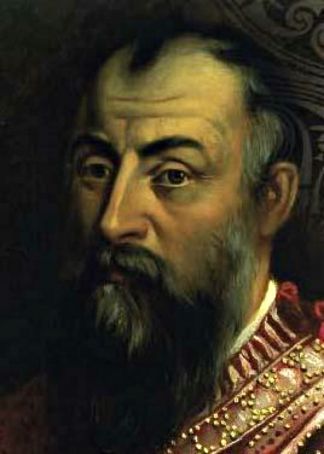Hugh O'Neill was buried in Rome's S. Pietro in Montorio 400 years ago.
Mícheál MacCraith
More and more Irish visitors to Rome are including the Spanish Franciscan church S. Pietro in Montorio as an essential part of their itinerary. It is not the panoramic vista of Rome from the Gianiculum that attracts them. Neither is it the splendour of Bramante’s Tempietto, aptly called the jewel of the Renaissance. Only the art connoisseurs among them will be familiar with the paintings of Sebastanio del Piombo. Scarcely any of them will have heard the tragic story of Beatrice Cenci, the Italian noblewoman buried in an unknown and unmarked grave in church precincts.
What attracts them primarily are the tombs of the Ulster earls situated below the left-hand side of the high altar. These include Rory O’Donnell, Earl of Tyrconnell, who died in Rome on 29 July 1608; his brother Cathbharr, who died on 24 September of the same year; and Hugh O’Neill's son, also called Hugh, baron of Dungannon, who died on 23 September 1609. While these monuments contain elaborate descriptions, it is the final gravestone that attracts most attention, even though it carries but one simple sentence in Latin: “the bones of prince Hugh O’Neill”. Though the funerary slab bears no date, we know from other sources that O’Neill died in the hospital of S. Spirito in Sassia on 20 July 1616, 400 years ago this year.
Flight of the Earls
Who were these Irish earls and how did they end up buried in the prestigious church of the Spanish crown in Rome? Unravelling the yarn of this tangled skein yields a tale of adventure, intrigue, bravery, ambition, high hopes and utter disillusionment: a tale that deals with the great what-might-have-been of Irish history.
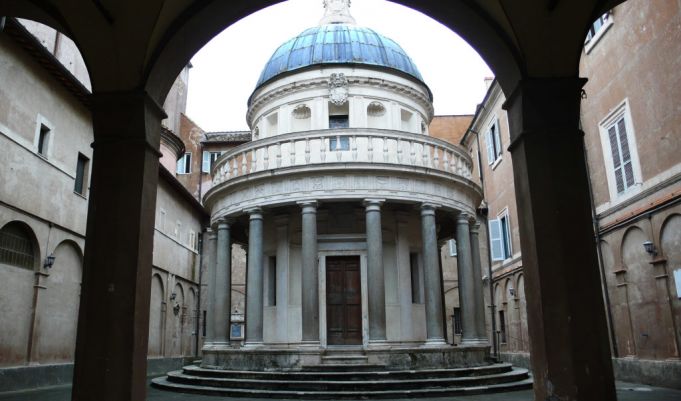
In the second half of the 16th century, the Tudor monarchy – now under the Protestant Queen Elizabeth I – adopted a more aggressive approach in extending crown authority throughout the island of Ireland. Gaelic Ulster, however, where the O’Neills of Tyrone were the leading dynasty, proved particularly recalcitrant. As the O’Neills were often divided among each other, it suited Dublin Castle to foment these fissures in the hope of breaking their resistance.
Sir Henry Sidney, the lord deputy, the English monarch's senior representative in Ireland, backed Hugh O’Neill’s claim to become Earl of Tyrone, hoping thus to create a loyal ally in the subjugation and Anglicisation of Ulster.
O'Neill's double game
Granted the earldom in 1587, Hugh had to wait until 1595 to be inaugurated in the Gaelic style as the O’Neill, a title prohibited by the crown. In the meantime O’Neill quietly built up his power base and trained his own army, sometimes working hand in hand with the crown, sometimes against it. His double game is best exemplified by the fact that he both slaughtered the crew of La Trinidad Valencera at the time of the Spanish Armada and gave succour to other survivors who were shipwrecked off the north-western coast of Ireland.
Dublin Castle eventually ran out of patience with O’Neill and he was proclaimed traitor in 1595. Spanish agents arrived in the northwest county of Donegal in 1596 where O’Neill and O’Donnell had requested a Spanish army to aid their struggle. O’Neill’s defeat of an English force of 4,000 men at the Yellow Ford in 1598 attracted international attention.
Success and failure
Despite his spectacular successes, O’Neill failed to win over the Old English Catholics of the larger towns in the east and south of Ireland, as they preferred to remain loyal to Elizabeth while holding out for freedom of religion.
Spanish aid, when it eventually arrived, was too late, too small, and in the wrong place, the southern port of Kinsale, far from O’Neill’s power base. The Irish insurgents marched south but were completed routed on January 3 1601. To this day Kinsale is considered one of the pivotal points in Irish history.
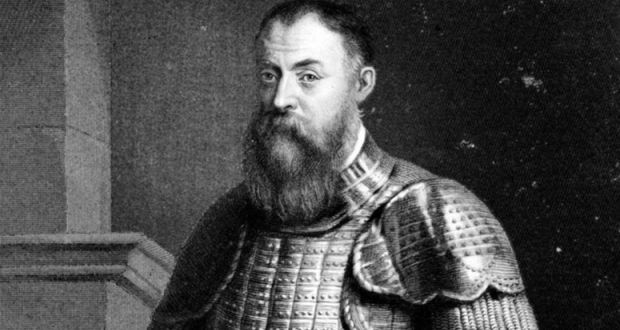
Holding out for two further years, O’Neill eventually submitted to Lord Deputy Mountjoy in March 1603. Restored to his earldom, and repudiating his Gaelic title, O’Neill received extremely generous terms from the war-weary crown authorities. Some, however, continued to harass him, rendering his situation almost unbearable. On 14 September 1607 O'Neill, accompanied by the Earl of Tyrconnell and 99 followers, set sail for the continent, an event that has gone down in history as the Flight of the Earls, though some recent commentators prefer to consider it a strategic retreat.
Treaty of London
Hoping to make the case for further Spanish military aid to King Philip III of Spain in person, O’Neill’s hopes were dashed when a storm blew his ship on to the French coast. Philip was embarrassed by the Irish prince’s presence on the continent but relieved that he had not landed in Spain. Spain and England had made peace with the Treaty of London in 1604, each party agreeing that neither should aid the enemies of the other.
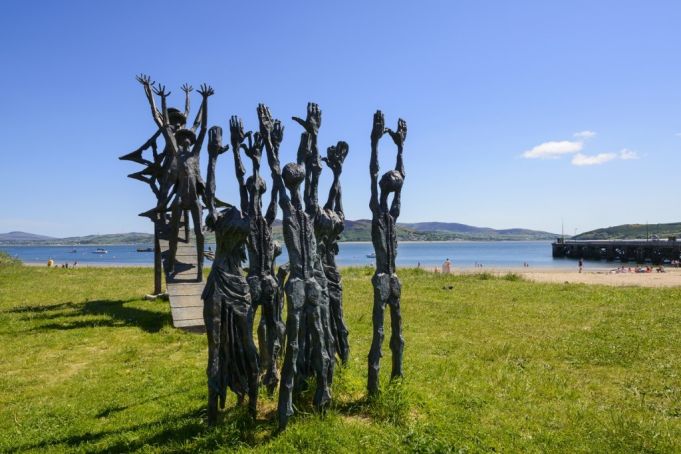
However Henry IV of France welcomed the fugitives, firmly refusing requests from London to have them arrested, but deftly guiding them to the Spanish Netherlands rather than to Spain. Warmly received by the Archdukes Albert and Isabella, the Irish party wintered in the Leuven area where the newly-founded Irish Franciscan college was situated. Continuous pressure from London on Albert and Isabella however, brought an end to the initial welcome. Hapsburg policy dictated that England should not be offended so the exiles were moved on to Rome, passing through Porta del Popolo on 29 April 1608.
Pope Paul V and King James I
O’Neill was initially treated quite splendidly by Pope Paul V, who invited him as guest of honour to the canonisation of S. Francesca Romana one month after his arrival, a signal mark of distinction that upset Sir Henry Wotton, the English ambassador to Venice. It soon began to dawn on O’Neill, however, that these tokens of esteem were all empty gestures. As the pope’s priority was to gain freedom of religion for English Catholics, he had no intention of upsetting James I. There was no way he was going to grant the Irish prince money or arms.
Spain was equally adamant. There was no way Philip III would allow O’Neill to travel either to Spain or to Flanders. Keeping the exiled prince in Rome was a useful trump card to have in reserve should war break out again between England and Spain, but until that should happen, Philip would do nothing to offend the court of St James. To make matters worse, the Irish found it difficult to cope with the insalubrious Roman climate, and both the Earl of Tyrconnell and O’Neill’s son Hugh were fatally stricken, dying in 1608 and 1609 respectively.
Destruction by peace
O’Neill’s growing frustration is palpable as we read the correspondence between Rome and Madrid during his period of exile. He mordantly described his situation after his surrender to the English crown as “destruction by peace”. It could equally well apply to his situation in Rome. As late as 1615 he declared that rather than live in Rome, he would prefer to return to his land with 100 soldiers and die there in defence of the Catholic faith and fatherland.
Writing to Andrés Velázquez, councillor of state to the Spanish king, in July, O’Neill reiterated his plea: “We only wish … to go forward to an honourable death rather than end our lives in miserable exile, and to leave the kingdom of Ireland united to Spain’s monarchy and free from the yoke of English tyranny, thereby ensuring for our countrymen not only nobility and liberty in this world, but also the eternal glory of their souls.”
O'Neill's death in Rome
But even though O'Neill was now in his 66th year, Madrid remained adamant. The scribe who recorded O’Neill’s death in Rome in 1616 for the Annals of the Four Masters (1632-36) wrote as follows: “The prince who died there – in Rome – far away from Armagh, was a powerful lord, mild and gentle with his friends, pious and charitable, but stern and fierce to his enemies; and it was a token that God was pleased with his life, that he allowed him to breathe his last in Rome, the metropolis of Christendom.”
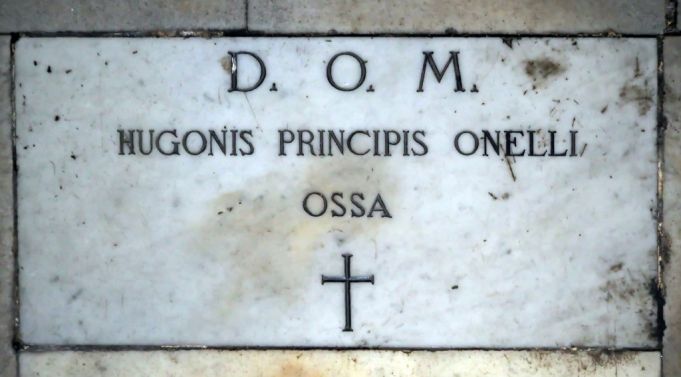
The great O’Neill would surely have demurred with the annalist considering his demise in Rome to have been a token of God’s pleasure, but the presence of the exiles’ graves in the church of S. Pietro in Montorio provides an opportunity for Irish visitors to reflect, to pray and to contemplate the imponderables of their history.
Fr Mícheál MacCraith OFM is the Guardian of St Isidore’s College in Rome.
This article appeared in the November 2016 edition of Wanted in Rome.



